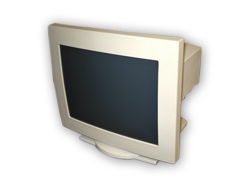|
Understanding Paper Weight
Of all the materials that have been used through the ages, paper has become the most widely employed around the world. In fact, the United States alone uses about 70 million tons of it each year! But could you differentiate between the countless types, thicknesses and weights of copier paper versus cardstock paper? Probably not.
Understanding paper weight is not common sense and may be a bit confusing. That’s why we have provided this resource for those who need a general guide on how to choose the right paper for their specific printing needs. Below you will learn about the most common methods used to understand paper weight, tools to help determine and distinguish between the various print media types.
Feel free to bookmark this page as a reference!
Specifying Paper Weights
Paper weight is an important component to consider when printing. Heavier media often conveys quality and provides durability. Unfortunately, sorting through the various methods of labeling a paper’s weight is not always straightforward. First, there are three common methods for specifying paper weight and thickness: U.S. Basis Weight (Bond, Book, Index, Cover, Tag, Points, Offset ), Metric weight (GSM or G/m2) and, often interchangeable, Points or Mils (an actual Caliper reading of the paper thickness).
The U.S. Basis (not basic) Weights, are the most confusing, simply because the same paper can yield different values based on the “Basis Weight” applied while manufacturing the paper. And higher values don’t always equate to heavier/thicker print media. For example, a sheet of 100lb Text paper is actually much thinner than an 80lb Cover stock.
The “Basis Weight” is defined as the weight of 500 sheets of paper in its basic unit uncut size, which means before being cut to Letter size or Legal size, the paper is weighed and categorized. The most common sizes, some of which you may recognize, are Bond, Text, Book, Cover, Index and Tag. An uncut sheet of Bond paper is 17 x 22 inches, while an uncut sheet of Cover paper is 20 x 26 inches. If 500 sheets of Bond paper (17 x 22 inches) weigh 20 lbs, then a ream of paper cut to Letter size will be labeled as 20 lb. And if 500 sheets of Cover paper (20 x 26 inches) weigh 65 lbs, then a ream of this paper trimmed to tabloid size would be marked as 65lb. This may be a lot to grasp, but don’t feel overwhelmed! Often professional printers don’t keep track of all the permutations. Based on experience from using a small subset, they have a pretty good idea of what to expect when reaching for a 24lb Bond versus a 60lb Cover versus a 110lb Index.
Each media often serves a specific purpose. Below you will find the basic descriptions and some “real-world” examples of the core print media applications.
Bond Paper
Bond paper is the most common and standard paper that is used in a wide variety of applications, from business forms to household stationery. It is a strong sheet used in most copiers and desktop printers in the form of 8 ½ x 11 inch 20 lb. standard copy and printer paper.
Book Paper
Book paper is pretty self-explanatory, as it is most often used for books.
Bristol Paper
Bristol paper is a heavy board-grade paper with a soft surface often used for catalog or paperback book covers.
Cover Paper
Cover paper, also known as cardstock or paper stock, is a heavy, stiff sheet and commonly used for folders, business cards, greeting cards, postcards and book covers.
Index Paper
Index paper is stiff, inexpensive, absorbs ink well and is frequently used for index cards and business reply cards.
Offset Paper
Offset paper is used in offset printing presses.
Tag Paper
Tag paper, relevant for the retail industry, is dense, strong and often used for store price tags.
Text Paper
Text paper, sold in many different colors and textures, is used for announcements and brochures.
Fortunately, there is a metric measurement that is nearly always displayed alongside the U.S. Basis Weight. The metric measurement (sometimes called grammage) is the actual weight of one sheet of media cut 1 x 1 meter square. Because the same size sheet is always being weighed, GSM (grams per square meter) provides a more uniform scale to judge a paper’s weight and thickness.
Finally, you can always measure the thickness of a sheet of paper using a caliper.
Specialty media is often specified in Points or 1/1000 of an inch. Media that measures 0.012 inches thick would be marked as 12-point media.
Understanding paper weights and paper types in the printing industry is not easy. However, it is valuable to have a basic understanding of it, whether you work in retail, advertising, IT, finance, for a small business or in a large corporation.
Did you Know? The origins of "bond" paper:
The name for bond paper comes from it having originally been made for documents such as government bonds. It is now used for letterhead, other stationery and as paper for electronic printers.
|







